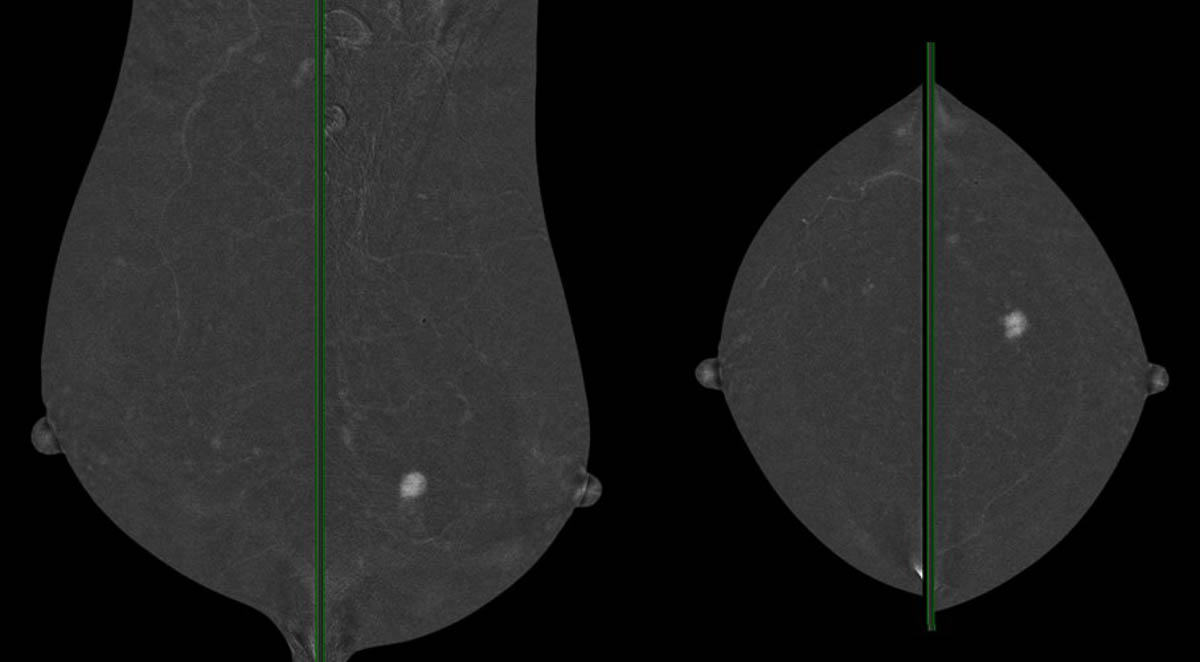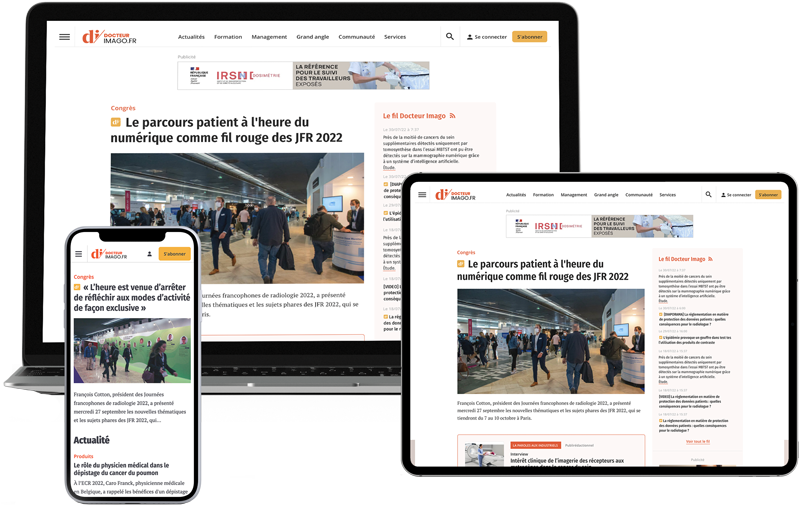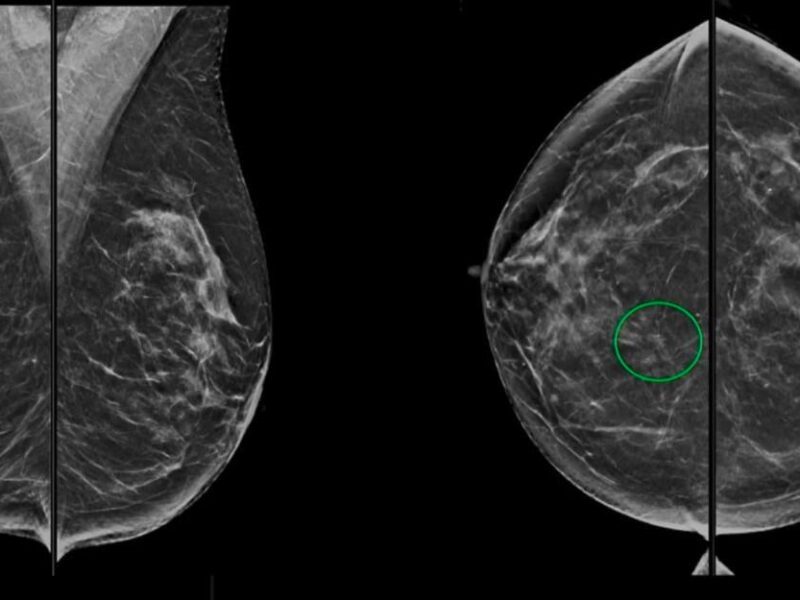Introduction
La mammographie et l’échographie sont les principales modalités d’imagerie pour le dépistage du cancer du sein et la caractérisation lésionnelle. Ces imageries permettent de détecter les modifications anatomiques du sein. L’IRM mammaire permet de dépister et d’étudier l’angiogenèse tumorale ; elle peut être indiquée dans les situations définies par la Haute Autorité de santé (HAS) [1]. L’angiomammographie est une application innovante de la mammographie numérique qui permet également d’étudier la vascularisation tumorale mammaire. Les premières études publiées sur cette technique datent de 2007 [2]. Du fait de ses excellentes performances diagnostiques, l’angiomammographie est une modalité d’imagerie prometteuse, malgré une dose de rayonnement modérément augmentée par rapport à la mammographie et la nécessité d’une injection de produit de contraste iodé.
Technique de réalisation d’une angiomammographie
L’angiomammographie est une application de la mammographie numérique












Discussion
Aucun commentaire
Commenter cet article